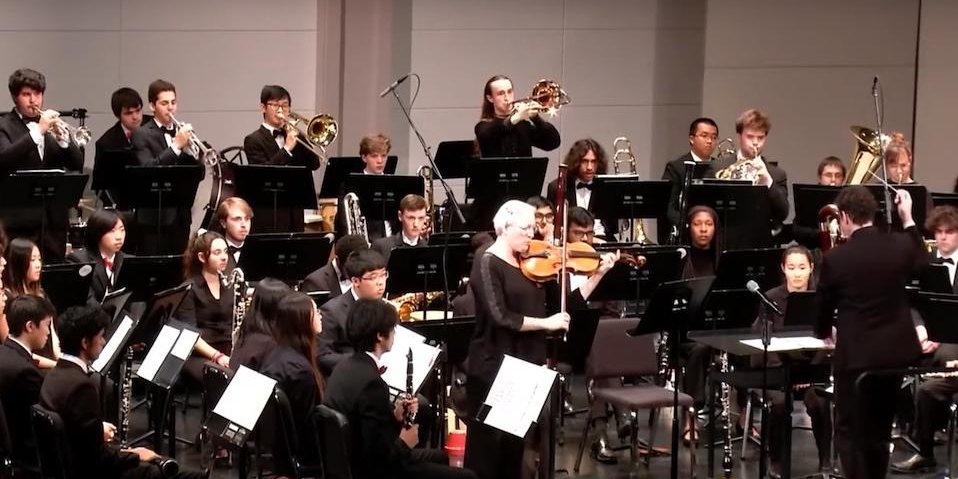On Nov. 13, 2022, Bailey Hall filled with the resonant debut of “A Place That Is Yours,” a piece of music written by Catherine Likhuta in memory of composer and professor Steven Stucky. Likhuta was able to rehearse beforehand with the student musicians in the Cornell University Wind Symphony and to speak to the audience during the concert thanks to Banding Together, a collaboration amongst central New York universities made possible by the Central New York Humanities Corridor.
The humanities corridor, a unique consortium of 11 universities and colleges endowed by the Andrew W. Mellon Foundation, is marking 15 years of supporting humanities research, educational initiatives and public engagement, such as this Cornell-led music project.
“Banding Together is a way for students to have meaningful interaction with a living composer,” said James Spinazzola, the Barbara and Richard T. Silver ’50, MD ’53 associate professor and director of winds in the College of Arts and Sciences (A&S), who started the project in 2022 in collaboration with Syracuse University; the University of Rochester’s Eastman School of Music joined soon after. “We want to keep growing the project so we can expose student musicians and audiences to composers from a broad swath of the global musical community.”
The Central New York Humanities Corridor began as a forward-thinking experiment in galvanizing collaborative research across universities, said Paul Fleming, the L. Sanford and Jo Mills Reis Professor of Humanities and director of Cornell’s Society for the Humanities (A&S), one of the corridor’s three principle investigators.
The core idea – to link humanities faculty and resources not just across departments but across campuses – has proven to be very successful, Fleming said.
“The beauty of the corridor is its flexibility,” Fleming said. “It can be anything imagined by the working group organizers – which includes not just faculty but also staff, librarians and archivists. The corridor provides a metaphorical and physical highway of connective possibilities across Central New York.”
